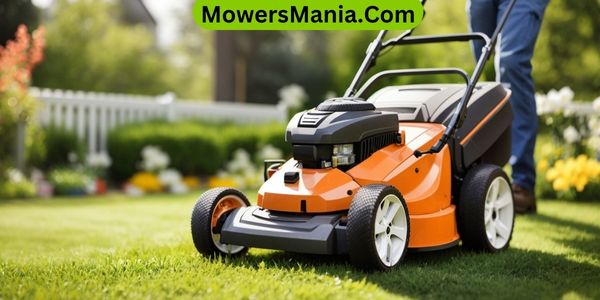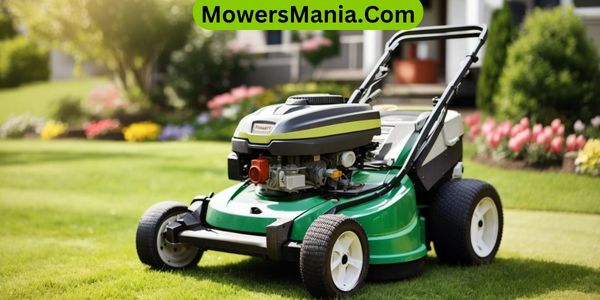Are you ready to tackle spring lawn maintenance? Get your mower out of hibernation and follow these essential tips for a lush, green yard.
- Find out the optimal mowing height
- Keep your mower in top shape
- Learn how to deal with those pesky weeds and pests

Don’t forget the important tasks for spring lawn care. Get ready to enjoy a beautiful lawn all season long!
Lawn Mowing Tips
- Use a sharp blade when mowing your lawn to ensure a clean and even cut. A dull blade can tear the grass, leading to an uneven appearance and potential lawn diseases. Before starting, check the blade and sharpen it if necessary. You can do this yourself or take it to a professional. Sharpening the blade won’t only improve the quality of the cut but also make the task easier and less time-consuming for you.
- Adjust the cutting height of your mower according to the season and grass type. During the spring, it’s generally recommended to set the cutting height at around 2.5 to 3 inches. This allows the grass to develop a strong root system and withstand the heat of the upcoming summer months. However, different grass types may have specific height requirements, so be sure to consult with a local expert or refer to the manufacturer’s guidelines.
- When mowing, overlap each pass slightly to avoid leaving uncut strips of grass. This technique ensures that you achieve a consistent and professional-looking finish. Additionally, try to vary the mowing pattern each time you mow to prevent grass from leaning in one direction. Changing the direction helps the grass to stand upright, resulting in a more uniform appearance.
- Finally, make sure to clear any debris, such as sticks or rocks, from the lawn before mowing. These objects can damage your mower or cause accidents if they get caught in the blades. Keeping your lawn free from debris also allows for a smoother mowing experience.
Proper Mowing Height
To maintain a healthy and well-manicured lawn, it’s important to understand the proper mowing height.
Cutting your grass too short can lead to scalping, which damages the grass and makes it vulnerable to weeds, diseases, and pests. On the other hand, allowing your grass to grow too long can result in a messy and unkempt appearance.
So, what’s the ideal mowing height?
The optimal mowing height varies depending on the type of grass you have. For cool-season grasses like Kentucky bluegrass and tall fescue, it’s recommended to maintain a mowing height of around 2.5 to 3.5 inches.
Warm-season grasses such as Bermuda grass and Zoysia grass should be mowed slightly shorter, at a height of 1.5 to 2.5 inches. Keeping your grass at the correct height promotes healthy root growth, improves drought resistance, and helps prevent weed invasion.
When mowing, make sure to follow the ‘one-third rule.’ This means that you should never remove more than one-third of the grass blade length in a single mowing session. Cutting too much at once stresses the grass and can result in a brown and patchy lawn.
Lawn Mower Maintenance

Now let’s talk about maintaining your lawn mower to ensure it stays in top shape for a successful mowing season. Proper maintenance is crucial for keeping your mower running smoothly and efficiently.
- The first step is to regularly check and change the oil. Just like with a car, the oil in your lawn mower needs to be clean and at the right level.
- Next, don’t forget to clean or replace the air filter. A clogged filter can restrict airflow and cause the engine to overheat.
- It’s also important to sharpen the mower blades regularly. Dull blades can tear the grass instead of cutting it cleanly, leading to a less healthy lawn.
- Additionally, inspect the spark plug and replace it if necessary. A faulty spark plug can cause starting issues and poor performance.
- Lastly, make sure to clean the underside of the mower deck after each use. Grass clippings and debris can build up and impede the mower’s performance.
Dealing With Weeds and Pests
To effectively deal with weeds and pests in your lawn, you should employ proper lawn care practices and take proactive measures.
Weeds can quickly take over your lawn if left unchecked, so it’s crucial to stay on top of them. Regularly mowing your lawn at the correct height can help prevent weeds from spreading and thriving. Additionally, make sure to remove any weeds that do emerge promptly.
Another effective way to control weeds is by maintaining a healthy lawn. Proper watering, fertilizing, and aerating can help your grass grow strong, making it more resistant to weed invasion.
It’s also essential to fill in any bare spots in your lawn, as weeds tend to take advantage of these areas.
When it comes to dealing with pests, prevention is key. Regularly inspect your lawn for signs of pest infestation, such as chewed leaves or tunnels in the soil. If you notice any issues, consider using organic pest control methods or consult with a professional.
Essential Spring Lawn Care Tasks

Get started on your essential spring lawn care tasks by assessing the condition of your lawn and creating a plan for the necessary maintenance.
By taking the time to evaluate your lawn’s current state, you can identify any issues or areas that require attention.
Once you have a clear understanding of what needs to be done, you can develop a plan that outlines the tasks and their respective timelines.
To help you stay organized, here is a handy table that lists five essential spring lawn care tasks:
| Task | Description |
|---|---|
| Raking | Remove any debris, such as leaves and twigs, to allow air and sunlight to reach the grass. |
| Aeration | Loosen compacted soil by creating small holes, which promotes better water and nutrient absorption. |
| Overseeding | Fill in thin or bare spots by spreading grass seed evenly across the lawn surface. |
| Fertilizing | Apply a balanced fertilizer to provide the necessary nutrients for healthy grass growth. |
| Irrigation Inspection | Check your sprinkler system for any leaks or malfunctions and adjust the watering schedule if needed. |
Following these tasks will ensure that your lawn is off to a great start this spring. Remember to adjust the plan based on your specific lawn’s needs and consult with a professional if you encounter any challenges.
Frequently Asked Questions [FAQs]
How Often Should I Mow My Lawn During Spring?
You should mow your lawn during spring every 1-2 weeks to maintain its health and appearance. Regular mowing helps prevent weeds and promotes thicker, lusher grass growth.
What Is the Best Time of Day to Mow the Lawn in Spring?
The best time of day to mow your lawn in spring is during the morning or late afternoon. This allows the grass to dry out from morning dew and avoids the heat of midday.
Can I Mow the Lawn Right After It Rains?
Yes, you can mow the lawn right after it rains. However, it’s important to wait until the ground is no longer soggy to avoid causing damage to your lawn.
Should I Bag or Mulch the Grass Clippings During Spring Mowing?
You should mulch the grass clippings during spring mowing. It helps return nutrients to the soil and promotes a healthier lawn. Bagging is not necessary and can be more time-consuming.
What Are Some Eco-Friendly Alternatives to Chemical Weed Killers for Spring Lawn Maintenance?
There are several eco-friendly alternatives to chemical weed killers for spring lawn maintenance. You can try using vinegar, boiling water, or pulling weeds by hand. These methods are safer for the environment.
Conclusion
So there you have it, some essential tips for spring lawn mowing and maintenance.
Remember to mow at the proper height, maintain your lawn mower, and tackle any issues with weeds and pests.
By following these tips and performing the necessary spring lawn care tasks, you can ensure a healthy and beautiful lawn throughout the season.
Happy mowing!



